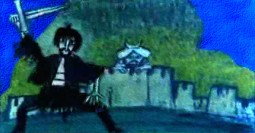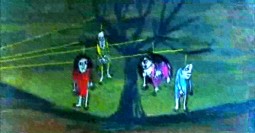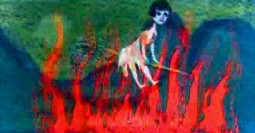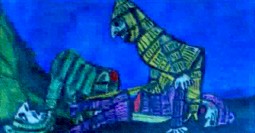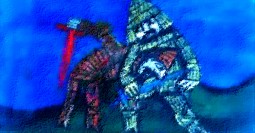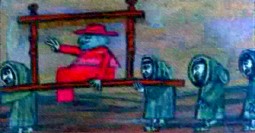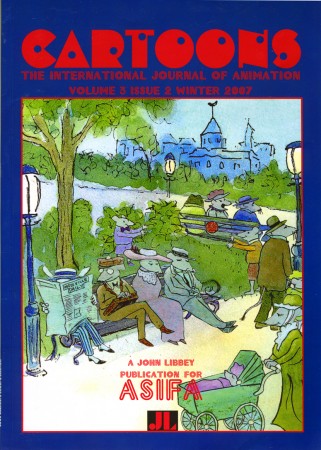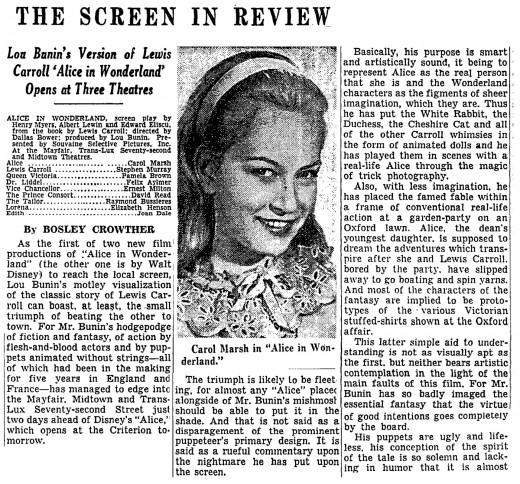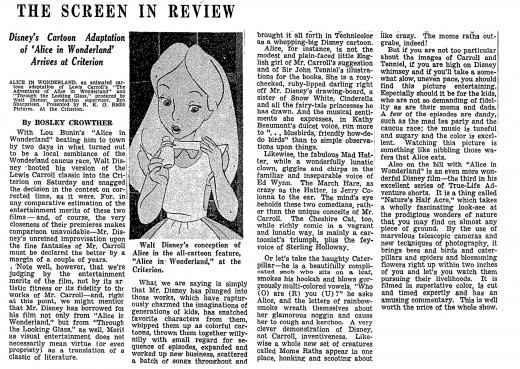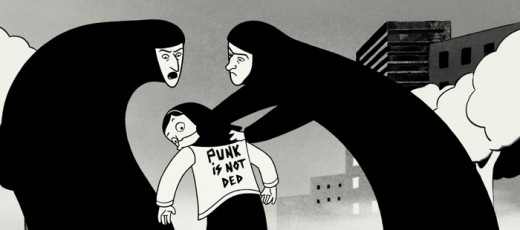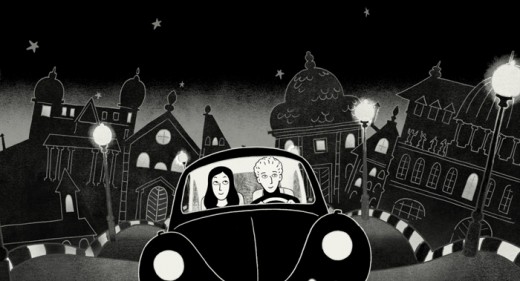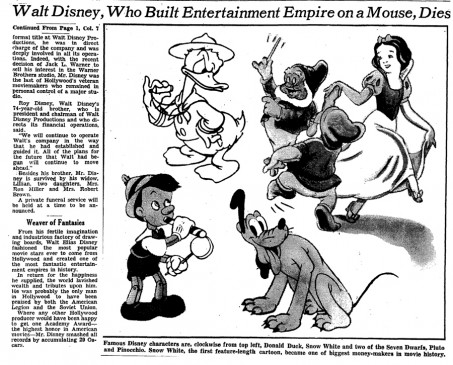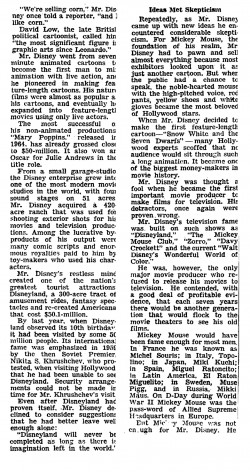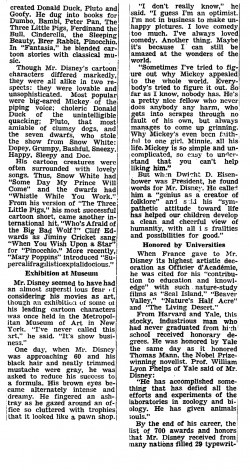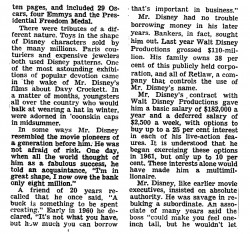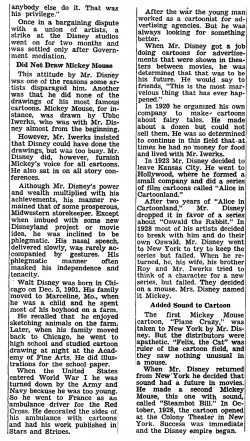Category ArchiveArticles on Animation
Articles on Animation &Daily post &Disney 22 Mar 2008 09:22 am
Running at the Mouth
- My favorite post of the last 24 hours has got to be the photo set on Michael Barrier‘s site. These are part of a series Mike calls, “A Day In The Life” in which he posts a number of photos all taken around the same time.
Here it is early 1930, and the animators at the studio are gathering in odd positions. I guess they needed some publicity photos, so they cranked them out. Who would have guessed that some of the expressions would be so hilarious. I couldn’t help but frame two images of Walt Disney in these group photos.
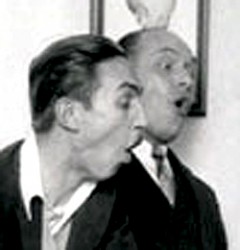 1
1 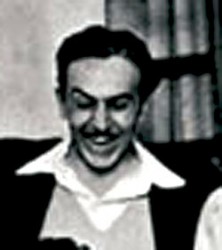 2
2 In the first he’s singing as is everyone else in the first photo as they’ve gathered around Carl Stalling playing at the piano. A group sing for animators! Huh!
In the second Disney’s obviously just broken up as the camera clicked. I doubt this photo ever saw publication prior to Mike’s posting. I have to admit, again, I love his site. There’s just always so much to take in.
- Speaking of Disney, thanks to Alan Cook‘s excellent site, I found myself led to a great French site: The Art of Disney Animation. There you’ll find a lot of Disney production art. Plenty of pre production art, designs and models. It’s an enjoyable side trip with lots to view.
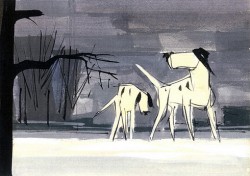 - And speaking of Dalmatians, the crème de la crème in the blogosphere, at least for me right now, has to be Hans Perk’s A Film LA. There at the moment, you’ll find a complete set of drafts for 101 Dalmatians. Hans is quickly posting all of these pages, and he has me studying this film, yet again. However, now I know who did what, and I don’t have to guess.
- And speaking of Dalmatians, the crème de la crème in the blogosphere, at least for me right now, has to be Hans Perk’s A Film LA. There at the moment, you’ll find a complete set of drafts for 101 Dalmatians. Hans is quickly posting all of these pages, and he has me studying this film, yet again. However, now I know who did what, and I don’t have to guess.
The great news is that as with the posted drafts for Pinocchio, Mark Mayerson will build on Hans’ drafts for 101 Dalmatians by creating Mosaics for this entire feature. It hasn’t begun on Mark’s site, but there’s something worth waiting for. Mark’s commentary is even more valuable than his extraordinary photo mosaics.
For the moment, Mark has an excellent essay on adapting children’s picture books into animated features. It’s another sharply written piece that you should check out, if you haven’t already.
- To take a completely different turn, let me say that I have become so involved in this Democratic race that it’s become officially an addiction for me. It’s so enormously entertaining, how could I not.
This past Thursday night, I came home a bit late from a movie. Prior to the film, I’d been completely absorbed in the events of the day – the back and forth of the mudslinging fired at Obama for having a pastor (or maybe because he is black.) In the two hours I was gone, all this news was reported:
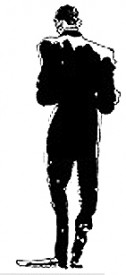 - There was a break in at the State Dept where several people checked out Obama’s passport data. Of course, they fired the two guys who were involved, so that now they can’t now be interviewed to see what they were doing. A “low level” curiosity mission?
- There was a break in at the State Dept where several people checked out Obama’s passport data. Of course, they fired the two guys who were involved, so that now they can’t now be interviewed to see what they were doing. A “low level” curiosity mission?
- John McCain has made an enormous number of gaffes in Iraq, England and Israel. He’s mixed up Sunni’s with Al Qaeda, and he’s called the Jewish holiday of Purim a “local version of Halloween.” He’d better pick Lieberman to run with him; he needs someone to hold him up. Then McCain fired someone for sharing an anti Obama/race YouTube video. No wait, he didn’t fire him. The person was suspended. McCain does have a semblance of dignity though, regardless of how war-crazy he is.
- Hillary continues to rant, attacking Obama for not making Michigan vote again, yet it was the Michigan legislature that didn’t make it work. She’s starting to sound like a spoil sport and a little too desperate.
This was all in a two hours of reportage. Since then, Richardson decided to endorse Obama, Bill Clinton said the two people in the race who honored their country were Hillary and McCain (can the former president do anything that isn’t devisive?). And now McCain and Hillary were also victims of investigation by contractors in the State Department.
Phew. it’s a great soap opera. We did get a brilliant speech this past week, and after eight years of a President who is not capable of pronouncing the word “nuclear,” I delight in these articulate speeches and hope for years more of them.
- The caricature above is by Barry Blitt, and it’s part of an excellent article that was in the NY Times this past week. The article discusses how cartoonists are caricaturing the
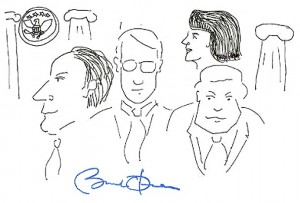 candidates. I have to admit I love Steve Brodner‘s work, so it was a pleasure to hear his thoughts.
candidates. I have to admit I love Steve Brodner‘s work, so it was a pleasure to hear his thoughts.
If this interests you, you’ll also enjoy seeing the caricatures of other senators done by Barack Obama. It was part of National Doodle Day, a charity drive which sold on ebay this past week. The drawing went for $2075. Gillian Anderson had the second highest bid price of $700 for her doodle.
________________________________________________(Click on images to enlarge.)
Articles on Animation 11 Mar 2008 08:36 am
Grim Feastival
In 1980 Reg Hart invited Grim Natwick to Toronto to talk with animators there about his many years in animation. In celebration of Betty Boop’s 50h anniversary they had a cake.
Grim Natwick, in one of his pieces for Cartoonist Profiles Magazine, wrote about this trip and included a number of photos. I thought it worth posting this short piece from the December 1980 issue of this publication.
Note that I have two other columns by Grim Natwick here and here.
Articles on Animation 28 Feb 2008 09:21 am
I Klein’s Music Gags
Articles on Animation &Comic Art &Commentary &Frame Grabs &Luzzati & Gianini 13 Feb 2008 08:51 am
Luzzati – Gianini titles
Two excellent videos are posted on Willym Rome‘s site, Willy or Wont He. They’re film pieces by Emanuele Luzzati and Giulio Gianini. Both films are difficult to find available.
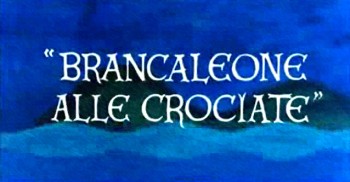 The Cat Duet is a work adapted from an operatic piece that uses much of Rossini’s music even though it’s not considered an opera by the composer. The background of the opera is hazy, but the animated film is a beauty.
The Cat Duet is a work adapted from an operatic piece that uses much of Rossini’s music even though it’s not considered an opera by the composer. The background of the opera is hazy, but the animated film is a beauty.
Brancaleone alle Crociate (Brancaleone at the Crusades) is a title sequence for the film by Mario Monicelli. It stars Vittorio Gassman and is reminiscent of other pieces by Luzzati and Gianini. I’ve made some frame grabs and am posting them below to give a small taste of the work. Go to the site, and view both videos.
See other posts I’ve done on Luzzati and Gianini. They’re all very musical, beautifully designed and cleverly animated films.
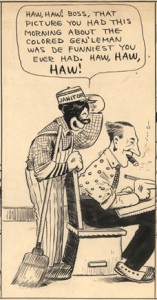 - Craig Yoe posted a wonderful original Mutt & Jeff comic strip on the Arflovers Blog. The strip features cartoonist, Bud Fisher, trying to draw a politically correct strip in 1919. Take a look; it’s hilarious.
- Craig Yoe posted a wonderful original Mutt & Jeff comic strip on the Arflovers Blog. The strip features cartoonist, Bud Fisher, trying to draw a politically correct strip in 1919. Take a look; it’s hilarious.
- Speaking of politically correct strips, there’s a good post about blacks in the current comic strips at The Root. It’s enlightening to read about this stuff in the 21st Century when we’re considering a black man as President. (Go Obama!) Race still matters to some people, unfortunately..
- And speaking about Obama if you haven’t watched the Will I Am song Yes We Can sung to Obama’s New Hampshire speech take the time to look at it. Over a billion people have watched it already. The last half is good. here
You should see it if only to appreciate the anti McCain parody
_______________-_________posted here.
_

_
- For something a little less controversial, check out the new post on the ASIFA Hollywood Animation Archive. It’s a beautiful book illustrated by Gustaf Tenggren. Tenggren, of course, had a big hand in the design of Pinocchio. He was also the creator of The Poky Little Puppy.
_
- Yesterday, John Dilworth showed me the cover of the latest copy of ASIFA International’s magazine, Cartoons. He came across the magazine before I’d received my copy. I was surprised to see my work featured so prominently. That was a treat, I can assure you.
Thanks to the editors, Chris Robinson and John Libbey for the fine choice of cover and to Ray Kosarin for writing it in the first place.
It was even more interesting that Dilworth was the one who animated that cover scene from my film, Abel’s Island.
_
_
Articles on Animation 23 Jan 2008 08:56 am
Alices
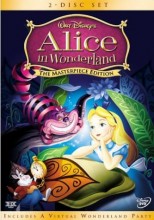 - For years, I’ve been intrigued by the two Alice In Wonderland animated features that were released almost simultaneously.
- For years, I’ve been intrigued by the two Alice In Wonderland animated features that were released almost simultaneously.
I first saw the Disney feature in B&W on the Disneyland television show when I was a child. It appeared in a truncated form edited down to the one hour format (which was probably around 54 minutes at the time.) They repeated this TV version several times, even after the show moved from ABC to NBC.
I didn’t get to see it in a theater in color until the mid 70′s.
I saw the Lou Bunin version one Sunday afternoon on local NY television in an unadvertised presentation. It took a very different approach. The live action opening was severely edited in that TV version. I saw it projected once in the Museum of Modern Art. 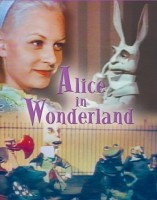 (There’s an excellent site that I located about this film which features lots of color stills.)
(There’s an excellent site that I located about this film which features lots of color stills.)
I had a conversation with animator, Jack Schnerk, during the Raggedy Ann production. He’d worked on Bambi as an assistant and told me that they rushed the last half hour of that production to get it out within the final six months. We were talking about Disney features when he told me that Alice was the last Disney feature he saw. He sat through half of it, he said, before walking out. All he could think was what a waste of talent and effort. All those drawings!
He then said, he saw the Bunin version of Alice soon thereafter (they did open within a week of each other) and felt that THAT’s what Disney should have done!
I did a little reading this week and came upon this article from the NY Times, October 8, 1946.
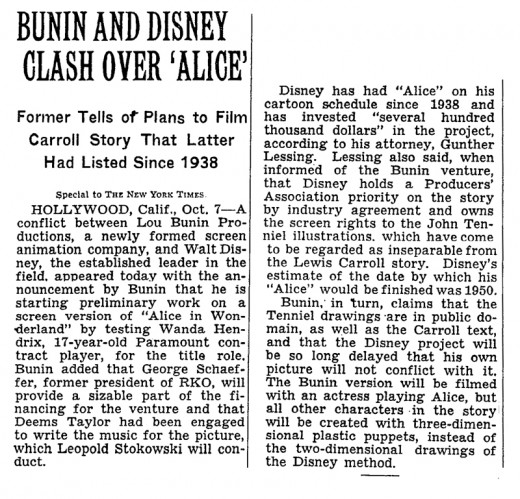
____________(Click any image to enlarge.)
There was another article from 1953 that I’m not posting. Disney took the Bunin film to court trying to suppress the film’s release. The article seems to side with Disney, but the judge didn’t. He lost the attempt to block the puppet film.
Then I decided to look at reviews. Both films had negative reviews from Bosley Crowther. Both were in the same week’s issues.
First the Bunin film reviewed July 27, 1951.
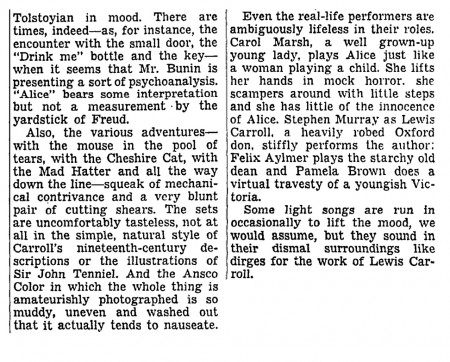
Here’s the negative review of Disney’s film from July 30, 1951.
Articles on Animation &Books &Disney 12 Jan 2008 10:14 am
Fantasia Program 2
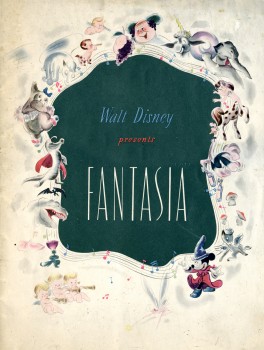 - Last week, I posted the souvenir booklet sold with the initial roadshow presentation of Fantasia. Here I’lll complete the post of the magazine.
- Last week, I posted the souvenir booklet sold with the initial roadshow presentation of Fantasia. Here I’lll complete the post of the magazine.
The booklet certainly feels quality. The paper is good and the illustrations are high caliber. However, many of the images were reused in several other books on the market at the time, notably the Deems Taylor book, Fantasia. That book, in itself, feels more like a souvenir of the film rather than anything more.
The booklet is quite handy for all the credits given. It makes the film feel important. One wonders if others of the early films had similar books. I haven’t seen any but assume they must have existed. If anyone knows for sure, leave a comment.
So, here it is. I’ve split it into two posts with #2 to follow.
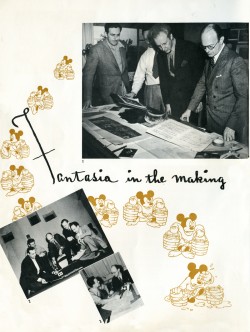 12
12
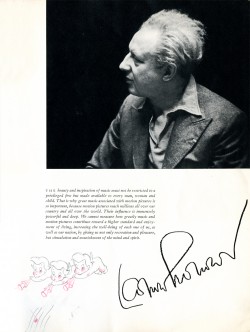
____(Click any image to enlarge to a readable size.)
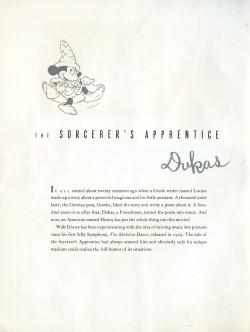 14
14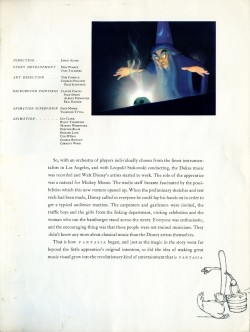 15
15
____
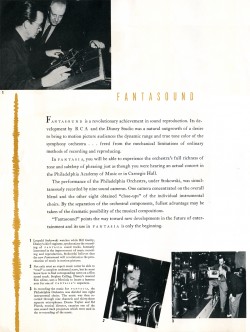 16
16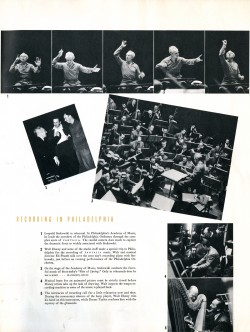 17
17
____
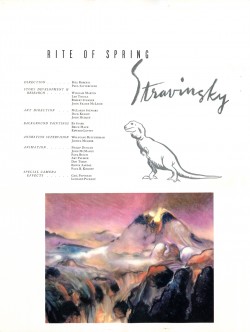 18
18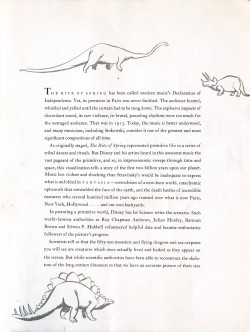 19
19
____
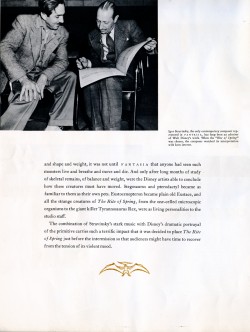 20
20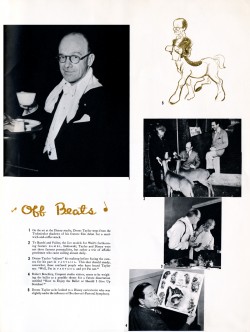 21
21
____
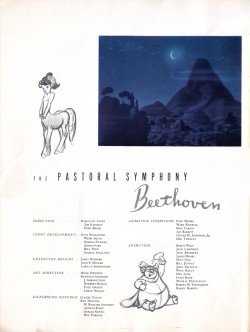 22_
22_
Articles on Animation &Books &Disney 04 Jan 2008 09:11 am
Fantasia Program 1
 - Back in the olden days, films were released very differently.
- Back in the olden days, films were released very differently.
It wasn’t until the early 60′s that an important film opened at more than one theater in a town/city. (I can remember that United Artists package of ten films that first did this. It included To Kill A Mockingbird, Dr. No, and A Hard Day’s Night. Even then we were talking about 60 theaters not 3000.)
In New York key films opened on Broadway, in Manhattan, and you had to buy reserved seat tickets in advance to see it. The film would play there for a month or two and then move onto more theaters locally around town.
I can remember the trip to see How The West Was Won, The Tales of The Brothers Grimm, Lawrence of Arabia, and others.
With this higher priced film presentation, you were given a small booklet or you could buy the deluxe souvenir booklet. In 1963, I found this deluxe booklet for the initial premiere of Fantasia. I bought it from a used-book dealer while I was still in college.
This past week, I watched Fantasia again and used the program to read some credits. That’s when I thought it might be interesting to feature the booklet on this site.
So, here it is. I’ve split it into two posts with #2 to follow.
 1
1  2
2
____(Click any image to enlarge to a readable size.)
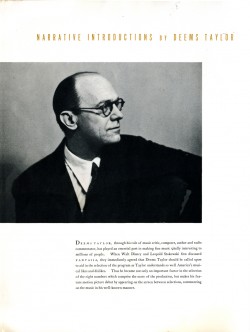 3
3 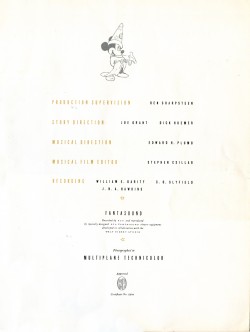 4
4
____
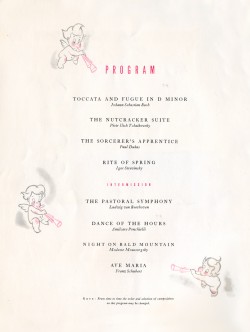 5
5 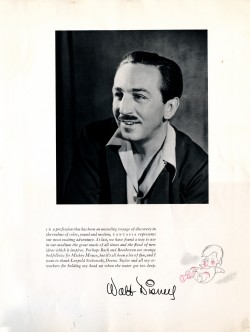 6
6
____
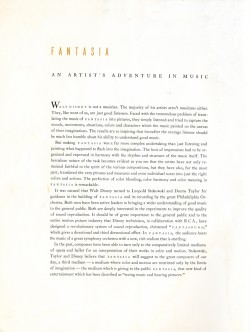 7
7 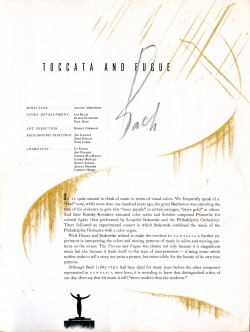 8
8
____
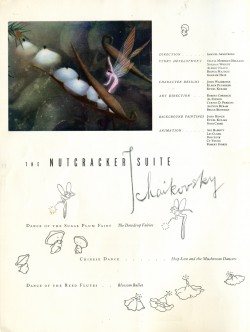 9
9 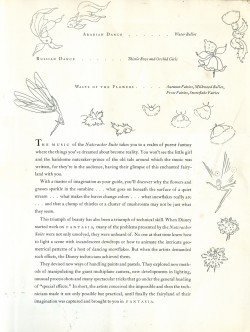 10
10
Articles on Animation &Commentary 20 Dec 2007 08:36 am
Persepolis – Opening Soon
- I saw Persepolis for the second time last Thursday. I am an ardent supporter of this film, and any criticism I offer must be taken with that grain of salt. The film is not the most daring of animated films, but it certainly does advance the intelligence of the animated feature – in enormous strides – given the current state of things. However, it is also cinematically annoying.
To start with, I must say the music does no service to this film. A synthesized tinkle and a simplemided tune does not help the emotional state of the film. In my opinion, it detracts rather than adds to the whole. On the second viewing, the music actually became an irritant for me.
The animation is simple, but I often wished it were more rooted in the soul of the characters. Instead, it seems more rooted in the style of the comic. The film is adapted from Marjan Satrapi’s “graphic novel” – “bandes dessinées”. As such the story is simple and built around clever graphics. These graphics served to set the scene for the film, and they play out as short set piece after short set piece with graphic transitions from one to the other. Irises, wipes, morphs all cleverly pull us from one short sequence to the other always 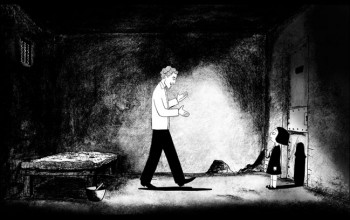 hiding the fact that we’re not living the film; we’re being told what’s happening. In fact, it gets a bit tiring. Something that would work enormously well in a short, gets exhausting and then tedious in a feature.
hiding the fact that we’re not living the film; we’re being told what’s happening. In fact, it gets a bit tiring. Something that would work enormously well in a short, gets exhausting and then tedious in a feature.
This, I think, is the product of inexperienced film makers and the very faithful transition from book to screen. Mind you, as I stated earlier, this is my favorite animated feature this year; I only wish I could feel like I’d want to watch it again. Unfortunately, it feels as though I’ve seen the film, and there’s not much more I can get from it.
I’ve read many of the reviews; some of the more mainstream reviewers are beginning to check in. Deservedly most of those reviews that have been printed have been positive. However, the one by Anthony Lane in The New Yorker feels particularly true for me. In his final paragraph, Lane writes:
- The film is largely in black-and-white, yet the result, far from seeming gloomy, has the pertness and the simplicity of a cutout. I found it, if anything, too simple. The faces are no more than tapered ovals, which makes some of the characters hard to distinguish, and I was left with the nagging, if ungallant, impression that I had been flipping through a wipe-clean board book entitled “Miffy and Friends Play with Islamic Fundamentalism.†There is no denying the boldness of “Persepolis,†both in design and in moral complaint, but there must surely be moments, in Marjane’s life as in ours, that cry out for cross-hatching and the grown-up grayness of doubt.
I’ve seen a number of interviews with Marjane Satrapi and co-director Vincent Paronnaud. They’re starting to repeat themselves. At my initial screening, I was given a press book. Therein were a number of official interviews with the staff and cast. I’d like to post one with “Art Designer,” Marc Jousset. It’s informative, not too long and it gives another voice to this fine feature.
 Interview with Marc Jousset – Art Designer
Interview with Marc Jousset – Art Designer
Why did you decide to produce Persepolis almost completely in a “traditional” way, not using computer generated images?
The question of which technique to use, arose very quickly when we discussed the movie. We started with 2D images on pen tablets, but we were not totally happy with the result. The lines lacked definition. It also seemed logical that Marjane should be able to work with the animators using the tools of her trade; paper and ink. It was clear that a traditional animation technique was perfectly suited to Marjane’s and Vincent’s idea of the film.
It’s an animation film with many characters…
Development took a long time, because of the sheer number of characters. For Marjane’s character, there were five separate steps: little girl, pre-teen, teenager, young woman and adult. Since it was also based on real events, and took place in Tehran under the Shah’s regime, then under Khomeini’s revolution, (not to mention Austria), we had to take into account the way people were dressed. There are scenes taking place at the university, in airports, at a punk concert, so it was impossible to draw only two or three characters. We had to animate a good deal of extras. However, we were lucky. Marjane drew all the characters. I thought we would have 200 model sheets to do, each character seen through different angles, so there was no discrepancy from one shot to the other, but actually we made over 600! I think it’s a record for an animated movie.
Did the use of black and white make things particularly difficult for an animated movie?
Using only black and white in an animation movie requires a great deal of discipline. From a technical point of view, you can’t make any mistakes. As soon as an eye isn’t in the right place, or a pupil not perfectly drawn, it shows up straight away on the large screen. It’s even more obvious in this particular film since it’s not a cartoon with codes, conventions and distortions. We were closer to Japanese animation because of the story’s realism, but we couldn’t apply the techniques used in manga. As a result, we had to develop a specific style, both realistic and mature. No bluffing, no tricks, nothing overcooked. With animation director Christian Desmares, twenty animators worked on the movie. Marjane had quite an unusual way of working. Each sequence (1,200 shots) was given to an animator. Marjane insisted on being filmed playing out all the scenes. Given that she’s a genuinely talented actress, it was a great source of information for
the animators, giving them an accurate approach to how they should work. It was also very encouraging for them that she was so committed and passionate. Usually, in animated movies, directors are rarely so concerned with the day-to-day work on the film. After animators, the assistant animators put the finishing touches to the drawings and check them against the original. Marjane’s drawings look very simple and graphic, but they’re very difficult to work on because there are so few identifying marks. Realistic drawings require outstanding accuracy.
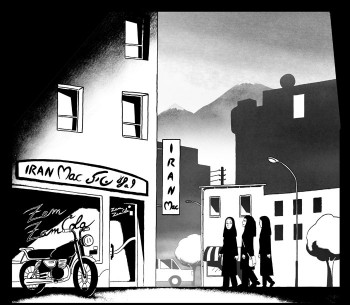 How many drawings were needed for Persepolis?
How many drawings were needed for Persepolis?
About 80,000 drawings for around 130,000 images. That’s quite reasonable for a feature made in the traditional way.
What do you think are Marjane Satrapi’s best attributes?
It’s a combination of rigor and generosity. She was always there for you, and never acted like a diva, like filmmakers who pop in once a week to hand out praises and criticisms. Not thinking about what memories this process might rekindle in her, she was totally committed and involved. She even animated certain scenes in the movie. It brought a unique atmosphere to the team and the collaborative effort.
What about Vincent Paronnaud?
His rigor, his eye and his daring. Marjane and Vincent have always favored content, whilst being very respectful to the visual work done. The story always came first. It’s not a movie made by technicians. They went to work on PersepoHs as though it were a live-action film.
Vincent is very good at artistic direction, composition, playing with black and white, and Marjane masters that as well. She was, however, more focused on the accuracy of emotions and feelings. Each had enough hindsight with his or her work, so that their advice stimulated the other. It’s quite amazing to see them work together. They are a true two-some.
What was the main challenge for you?
To be on schedule, and to stay within budget, whilst maintaining our requirement for high quality. The budget was 6 million Euros, which is reasonable for a 2D movie made in France. I’ve rarely seen a team so focused on a project, not only for the technical challenge, but also for the story itself. I think the culmination of the fact that it was a true story, that the main character worked with you, that an animated movie dealt with a current issue and that it was intended for adults was tremendously exciting for the team.
Articles on Animation &Commentary 15 Dec 2007 09:11 am
Death of an Immortal
 Today’s the anniversary of Walt Disney’s death.
Today’s the anniversary of Walt Disney’s death.
He had been in bad health for a few months prior to his entering St. Joseph’s Hospital in Burbank, CA on November 2, 1966, complaining of pain in his neck and back.
An X-ray revealed a tumor on his left lung and surgery was advised. This surgery was performed on November 7th, and his left lung was removed for cancer.
Disney was released from the hospital after two weeks. He collapsed at his home in Palm Springs after spending Thanksgiving Day with his family. He spent his 65th birthday in the hospital with his family at his bedside.
On December 14th, Lillian spent some time with him, and his brother Roy visited in the evening. Roy ordered the lights at the Disney Studio across the street, to stay on at all times, while Walt was in the hospital. Walt would ask the nurses to prop him up so he could see the studios.
He died at 9:30 AM on Thursday, December 15, 1966.
The cause of Disney’s death was announced as acute circulatory collapse and was listed as cardiac arrest on his death certificate.
Not much of the information detailed above was open to the world at large.
I was a senior in college in 1966. In the middle of my day, I was preparing for a showcase I was supposed to give of an artpiece that was due for an advertising class. A number of the other art students in the school came running in to break the news to me. They were certain that I would just fall apart, and I remember not being shocked about it. I took the news in stride and went on to prepare my artwork.
I’ve always felt that I somehow hurt those classmates by not being more taken by Disney’s death. It’s at moments like this, that we start to realize things that others expect of us, and we start figuring out how to give it back to them. I guess I was affected by that day, but I’m sure it wasn’t directly related to Walt’s death.
Just for the interest of anyone out there, I’m posting here the Obituary for Disney which was published in the NYTimes that day. It’s very long, so I had to break it into six big docs. To read it, you’ll have to click on the images to enlarge.
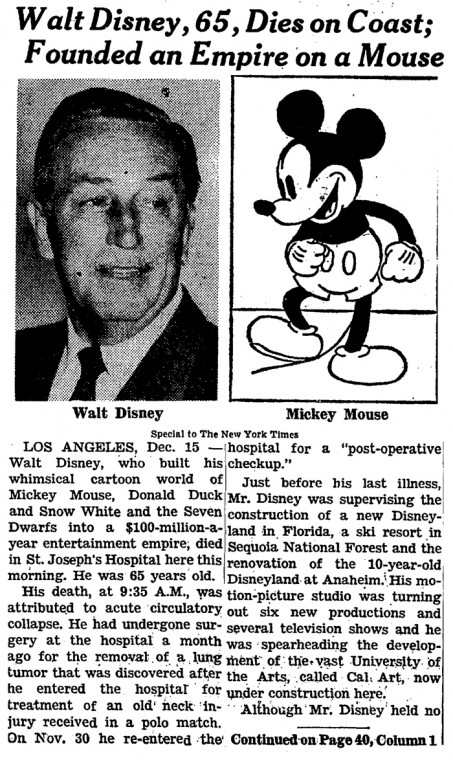 1
1
Articles on Animation &Fleischer 07 Dec 2007 09:07 am
Other Places
 - Congratulations to my good friend, John Canemaker, on being awarded the WINSOR McCAY AWARD for career contributions to the art of animation.
- Congratulations to my good friend, John Canemaker, on being awarded the WINSOR McCAY AWARD for career contributions to the art of animation.
How more perfect to give this award to the guy who wrote the first and foremost biography of Winsor McCay. The Annie committee definitely got one right this year.
Congrats, also, to all the other nominees viewable here.
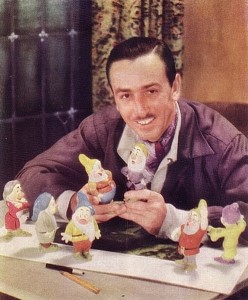 – I love reading magazine articles from the past about animation. That means mostly Disney. There’s a lovely piece from the December 27, 1937 issue of Time Magazine about Disney and his “folly,” Snow White which has been posted by Joe Campana on his excellent site, Animation Who and Where.
– I love reading magazine articles from the past about animation. That means mostly Disney. There’s a lovely piece from the December 27, 1937 issue of Time Magazine about Disney and his “folly,” Snow White which has been posted by Joe Campana on his excellent site, Animation Who and Where.
The attractive image to the left was on that magazine’s cover. So much of the PR work on Snow White really gets me. I have this wonderful old 16mm copy of a trailer for the film. There was obviously no animated footage prepared for the trailer, so they used short live action clips of people dressed up like the seven dwarfs walking around a little house they’d built. Perhaps it was the one at the Carthay Circle Theater.
If you don’t know Joe Campana’s site and do go to check out the magazine I urge you take a good look at other posts there. My favorite is still one posted last June on the “Ghosts” of the Mintz Studio. It’s a great piece of detective work that absolutely amused me.
Modern Mechanix has posted a number of past articles about animation. Here are two short articles about new machinery for animation.
You can check out the original articles on the actual site.
- article 1
- article 2
__(Click any image to enlarge and/or read the article.)
__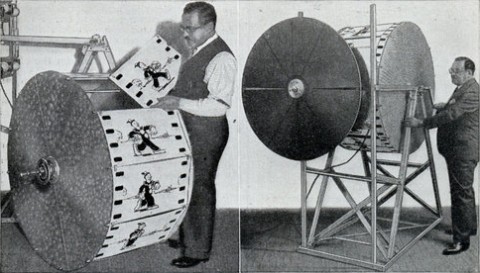
The first article is about a Fleischer invention in the 20′s that never made it. It’s a new machine to project animated drawings on a large drum.
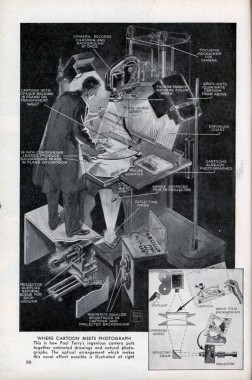 __
__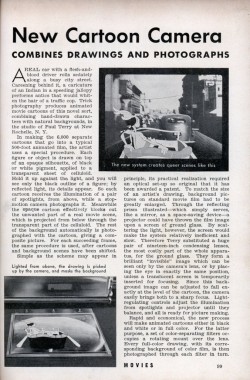
This second article is about an animation camera device at Terrytoons in 1940 that allowed you to rotoscope and combine live action with animation. This piece of equipment remained as an addition to the Oxberry Camera that could be added onto deluxe models.
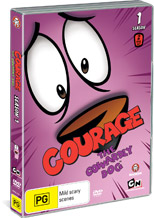 – In other news, John Dilworth reports that the first season of Courage the Cowardly Dog is finally out on dvd.
– In other news, John Dilworth reports that the first season of Courage the Cowardly Dog is finally out on dvd.
The only problem is that it’s only available in Australia. Perhaps Cartoon Network will get their act together and share this with US buyers! The show was one of their best, and the channel has done everything they can to bury it.
Out with the old – in with the new.
Oh, and the new isn’t even Aqua Teen Hunger Force!
(By the way, there are already five editions of dvd’s for this pathetic program. That’s not counting the feature that no one saw, also available on dvd.)
There are many other, more recent programs whose titles are less memorable. I’m sure their new live-action programming will be more effective for them.

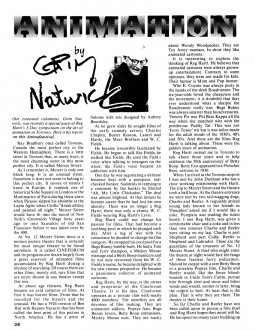 1
1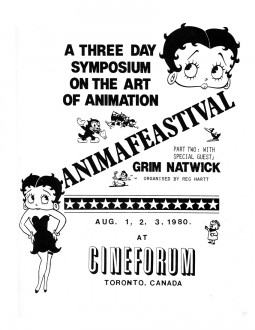 2
2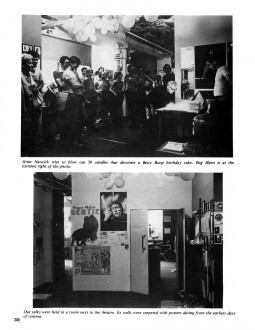 3
3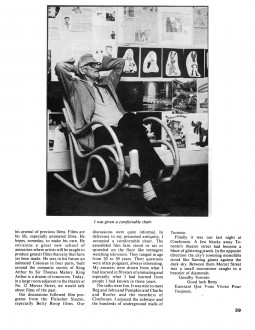 4
4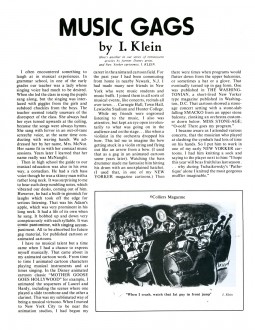 1
1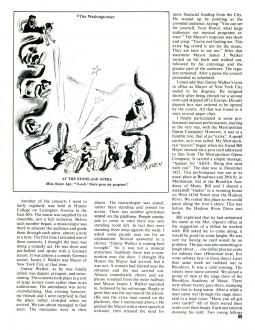 2
2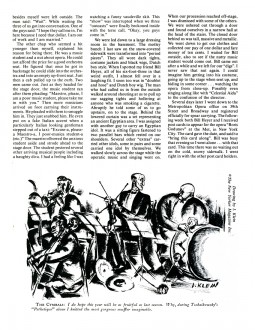 3
3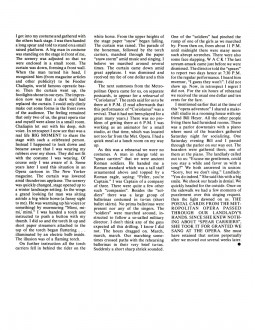 4
4